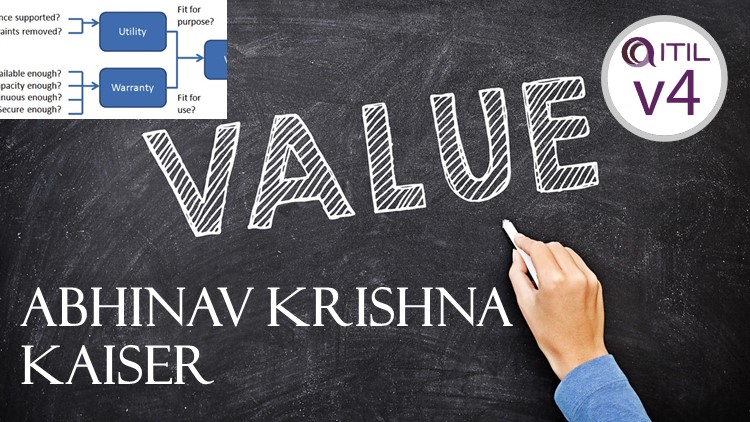Let’s go deeper into understanding value in this post in a digital way. I will give you a hint, we will be discussing value through logic gates.
There are two parts to a value, utility and warranty. I will touch upon utility first.
Utility
Value is best understood through examples. You are bored and you want something to cheer you up. So you turn on your TV and get into Netflix. You choose an episode of Modern Family and start watching. At the end of the episode, you are giggling and you are in a better mood than when you started. So did the TV show entertain you and cheer you up? Indeed! You can then say that the service, the TV show in other words did indeed meet your expectations.
In ITIL lingo, we call it as meeting the purpose. The service met the purpose of what it was intended for. If the show had made you duller or didn’t entertain you enough, then probably you could have said that the service did not meet the purpose. Remember that value is subjective. So it is all about you. You are the judge, jury and the executioner. So the judgement of a service being useful is done by you and you alone.
ITIL officially states utility as the functionality offered by a product or service to meet a particular need.
Utility can be summarized as ‘what the service does’ and can be used to determine whether a service is ‘fit for purpose’. To have utility, a service must either support the performance of the consumer or remove constraints from the consumer. Many services do both.
Digitally speaking, I can represent utility as per the logical diagram.

Utility is represented by an OR gate with performance supported and constraints removed as the two inputs. For a service to be fit for purpose, it either needs to perform as per the expectations or help remove burdens from an end user. For a service to create value, either one of the two must happen. If both are true, then the service is excellent and is definitely fit for purpose. The table represents the matrix for various options. If both the performance and constraint parts of a service does not meet the expectations of a service, then the service is not fit for purpose, and there is no value created for the user.

Taking on the Netflix example, the Modern Family episode entertained you thoroughly. So the performance was different present which in turn makes the service fit for purpose and valuable. Adding to that, the service helped you get over your boredom. Stretching a bit, the show removed the constraints that you experienced. From both the counts, the show can be deemed fit for purpose.
Warranty
Now warranty, the second half of value. While the actual utility is one part of the value proposition, there are other factors that matter as well. What if the show on Netflix is super entertaining but it keeps buffering every ten seconds. What if somebody else is able to access your account. What if the Netflix app crashes and goes down for hours on end. Would you be happy with the service?
You know the answer!
For a service to be fit for use, it needs to meet 4 conditions.
- Availability: You need to have the service available to you as and when you are entitled to have it. What is the point of having a big range of movies and shows on Netflix if the service is down when you want to watch it.
- Capacity: A service must have sufficient capacity for the end user to use the service normally. Let’s say that Netflix is available as and when you want it, which is great, but it buffers on a regular basis. Is the service still valuable?
- Continuity: A service needs to available continuously. In other words, there shouldn’t be breaks of downtimes on a regular basis which is not going to add value to the user.
- Security: Most importantly, a service must be secure. Nobody who is not entitled to use the service must be able to. If your neighbor starts accessing your Netflix account and accesses your viewing activity, how would you feel? Well, Netflix is not a great example. But imagine a banking service where your account is not fully protected. It’s a serious issue and no matter how many features your bank offers, you will not sleep well just knowing that money in the bank is not safe.
The official definition of warranty reads: Warranty provides assurance that a product or a service will meet its agreed requirements.
These four aspects of a service that add value is called as the warranty of a service. The warranty ensures that a service is fit for use. It is represented by an AND gate. So, all the four aspects, availability, capacity, continuity and security must be met for a service to be considered valuable.

The table represents the matrix for various options. For a service to be truly valuable, all the 4 aspects of warranty must be met.

Value
True value of a service is created if it is fit both for purpose as well for use. It must meet the conditions for both the utility and warranty. And only then, a service is valuable. The AND gate represents value creation with utility and warranty.

Expanding, further, the entire set of logic gates for value creation looks as follows.

To summarize, value is made up of both utility and warranty. Both are inherent parts of a service and value is created when both are true. For utility, which refers to a service fit for purpose, it either needs to support performance or remove constraints. For warranty, which refers to a service fit for use, it must support all the four aspects of warranty: availability, capacity, continuity and security.
